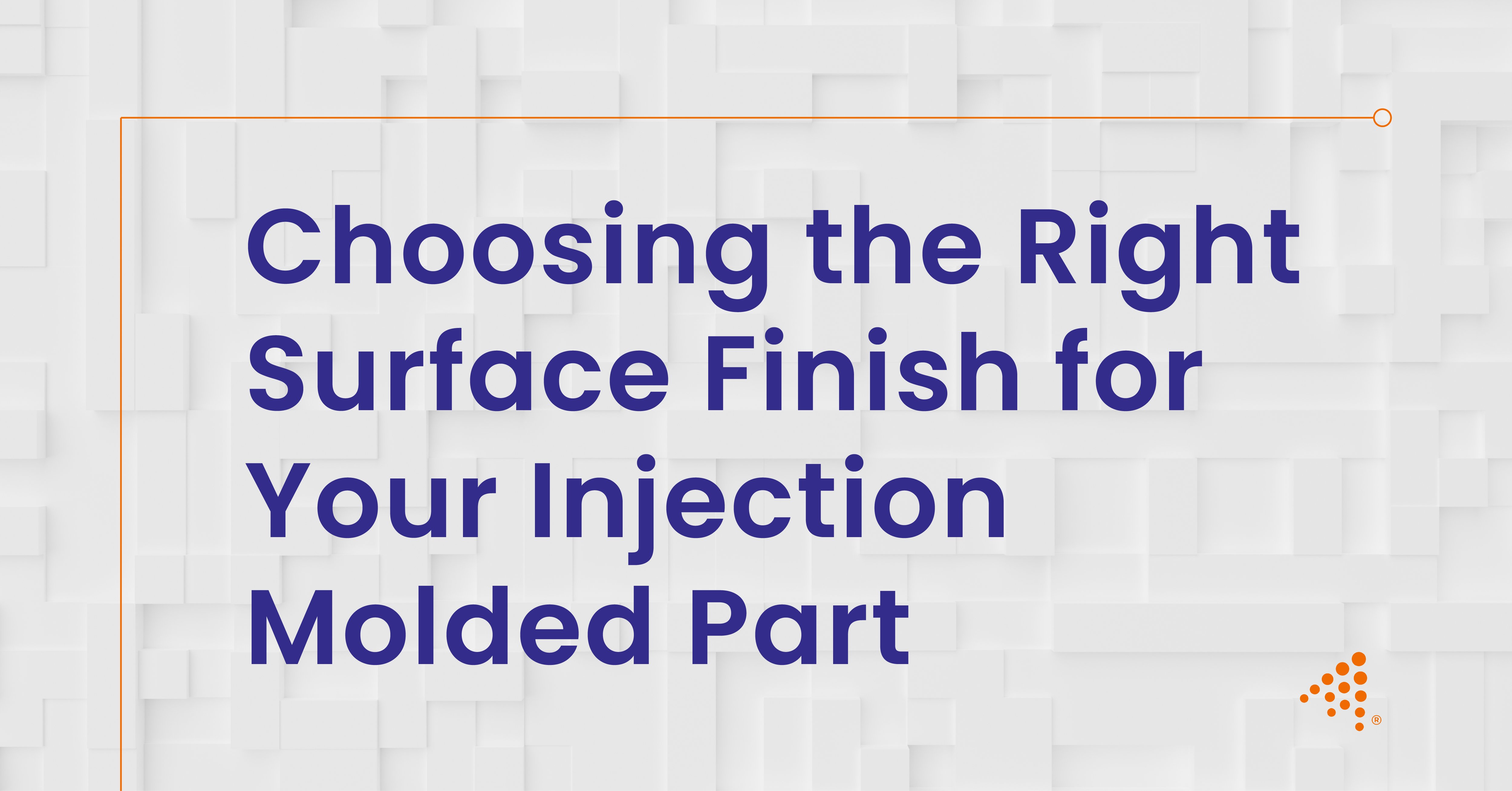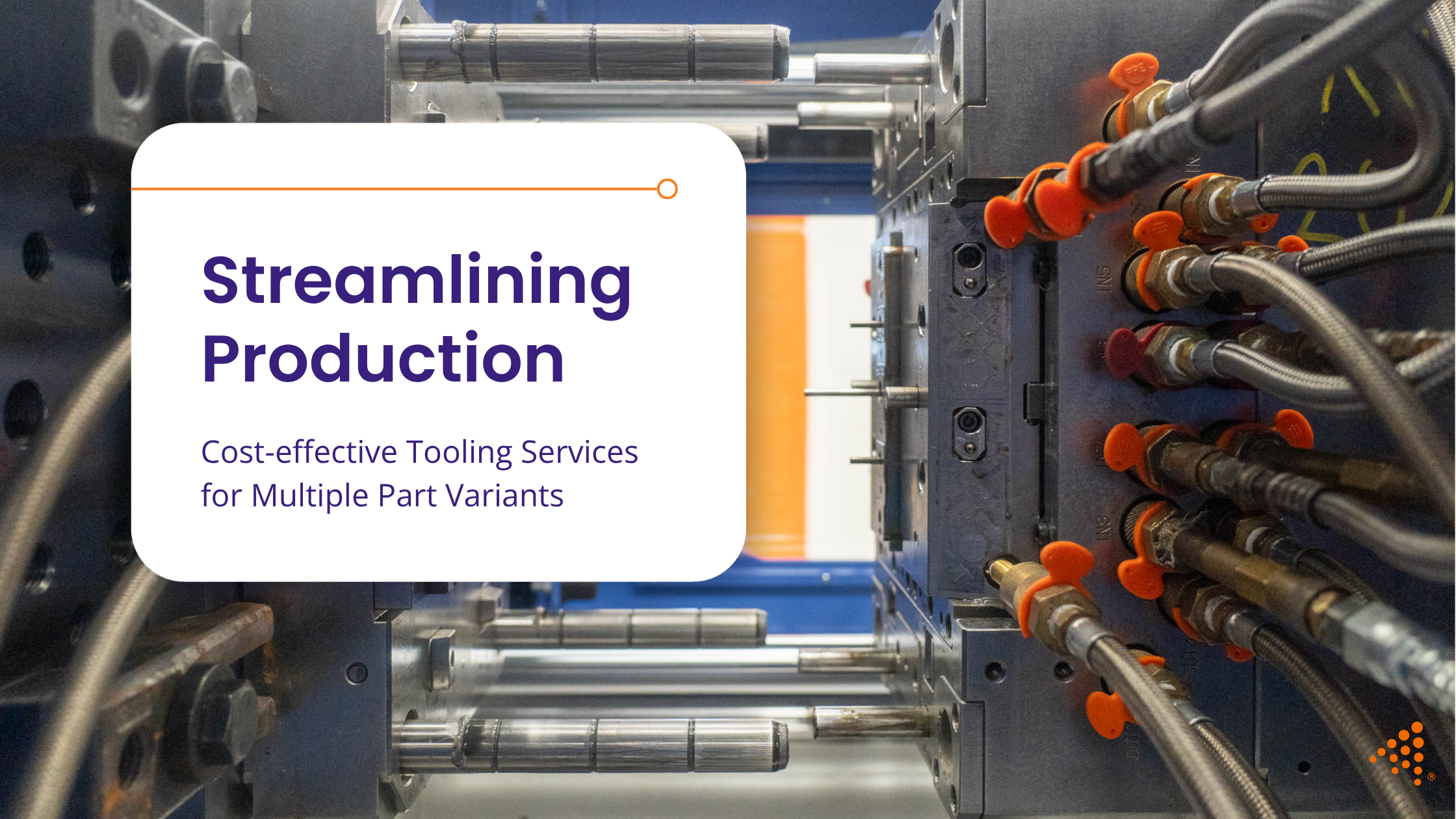How Early DFM Can Slash Tooling and Production Costs by 30%
Bringing a new product to market is a complex balancing act. Innovation must be weighed against the pressures of time-to-market and, most...
5 min read
Nick Erickson : Jun 24, 2025 8:35:00 AM

When developing a plastic part through injection molding, the surface finish might initially seem like a purely aesthetic choice. However, its significance extends far beyond visual appeal. The texture and smoothness of a part's exterior—its surface finish—profoundly impact its performance, the cost of manufacturing, and even the tactile experience it offers the end-user. Since the surface finish is intricately built into the injection mold itself, making informed decisions early in the Design for Injection Molding (DfIM) phase is paramount to achieving a successful and cost-effective outcome. This guide offers a comprehensive look into the world of injection molding surface finishes, revealing how this seemingly simple detail can shape your product's success.
In the context of injection molding, a surface finish refers to the specific texture or degree of smoothness applied to the exterior of a molded component. This finish isn't an afterthought; it's created by meticulously preparing the mold cavity. Processes like high-precision polishing, careful sanding, or specialized texturing are applied to the mold's internal surfaces. Consequently, every part produced from that mold faithfully replicates this engineered finish.
The choice of surface finish carries significant weight, influencing a wide array of factors:
Read More About PEEK: The Ultimate High-Performance Resin for Extreme Conditions
The interaction between the chosen plastic resin and the mold's surface finish is a critical consideration. Different polymers behave differently, and understanding these nuances is key to preventing issues and optimizing results.
For instance, Acrylonitrile Butadiene Styrene (ABS) is well-suited for achieving high-gloss finishes, readily replicating polished mold surfaces. Conversely, Polypropylene (PP), due to its lower surface energy, presents challenges in attaining a similar level of gloss. When working with materials like glass-filled nylon, a textured finish often proves beneficial. It effectively masks the visibility of the internal glass fibers at the surface, which might otherwise create an undesirable visual effect. Furthermore, designers must be cautious when specifying high-polish finishes (like SPI A-Series) for plastics known for high shrink rates, as these mirror-like surfaces can accentuate and make sink marks or other imperfections more noticeable.
Our team provides end to end manufacturing services, from Rapid Prototyping Services and 3D Printed Prototypes to tooling services and full-scale plastic injection molding services.
To ensure consistency and clear communication between designers, toolmakers, and manufacturers, the Society of the Plastics Industry (SPI) established a widely adopted classification system. This system defines standard grades of surface finishes based on the method used to prepare the mold surface.
|
SPI Class |
Finish Type |
Process Used |
Common Use Cases |
|
A-Series |
High Gloss |
Diamond buffed |
Lenses, medical housings, cosmetic parts |
|
B-Series |
Semi-Gloss |
Fine-grit sanding |
Consumer products, moderate cosmetics |
|
C-Series |
Matte |
Stone polishing |
Structural or hidden parts |
|
D-Series |
Textured/Rough |
Media blasting |
Grips, rugged enclosures, hiding defects |

Within each series, specific grades (e.g., A-1, B-2, C-3) denote a progression in surface roughness, with higher numbers generally indicating a rougher or less polished finish. Adhering to these standards ensures that the desired outcome is clearly understood and achievable.
Selecting the ideal surface finish requires a careful evaluation of your part's specific requirements. Moving beyond a simple visual preference involves considering function, cost, and manufacturing implications.
If the primary goal is a pristine, mirror-like, or high-gloss appearance, particularly for premium products or optical components, the A-Series finishes, achieved through meticulous diamond buffing, are the preferred choice, though they come at a higher tooling cost.
For applications demanding a durable, non-reflective surface that effectively conceals minor wear, scratches, or fingerprints, the C-Series matte finishes, created with stone polishing, offer a practical solution. These are often used for internal or less visible parts.
When enhanced grip, a rugged aesthetic, or the need to mask potential molding imperfections like flow lines or sink marks is critical, the D-Series textured finishes are highly effective. These are achieved through various media blasting techniques.
Often, a balance is needed between appearance, functionality, and budget. In such cases, the B-Series semi-gloss finishes provide a versatile middle ground, offering a visually appealing surface without the high cost and sensitivity of A-Series polishes.
A structured approach, potentially using decision matrices or consulting with experienced molders, can help navigate these choices effectively, ensuring the selected finish aligns perfectly with the product's objectives.
Read More About Key Components of Injection Molding Part 1: Injection Unit
The surface finish chosen during molding can significantly impact subsequent secondary manufacturing processes. It's important to consider these downstream effects early on.
For instance, paint adhesion can be challenging on extremely high-gloss (A-Series) surfaces. The lack of microscopic "tooth" can prevent paint from bonding securely, often necessitating the use of specialized primers or surface preparation techniques, adding cost and complexity. Conversely, while textured surfaces might seem better for adhesion, very rough textures (D-Series) can cause issues with pad printing or labeling. The uneven surface can lead to incomplete ink transfer or distorted graphics, compromising the final look. Furthermore, any secondary machining operations, like drilling holes or trimming flash, will inevitably expose the underlying material, creating a contrast with the molded surface finish that may need to be addressed.
The surface finish isn't just an external feature; it directly influences the efficiency and potential challenges within the injection molding process itself.
Highly textured finishes, especially deep or complex patterns found in the D-Series, can increase the risk of air entrapment. As plastic flows into these intricate details, air can become trapped, leading to voids, burn marks, or visible weld lines where plastic fronts meet. These finishes can also impact mold release. A rougher surface increases friction, potentially requiring higher ejection forces, which can deform the part or necessitate increased draft angles (the taper applied to vertical walls) to facilitate smooth removal.
Moreover, the finish affects long-term mold wear. Abrasive textures or very high-polish finishes can accelerate the degradation of the mold tool over many production cycles. This leads to increased maintenance costs and potential downtime, impacting overall production efficiency and cost-per-part.
Avoid costly mistakes and optimize every production step with our design for manufacturing services and injection molding design solutions.
The field of surface finishing is continually evolving, driven by technological advancements, design demands, and increasing environmental awareness.
Laser-engraved texturing is gaining prominence as an alternative to traditional chemical etching. It offers exceptional precision, allowing for intricate and complex patterns, and is often considered more environmentally friendly due to the reduction in chemical use and waste.
In response to health and safety concerns, especially in medical and consumer goods, antimicrobial coatings and additives are increasingly being integrated. These require surface finishes that are compatible with their application and do not hinder their effectiveness.
Micro-texturing, often created using laser technology, is pushing the boundaries of functional surfaces. These microscopic patterns can be engineered to achieve specific properties, such as hydrophobicity (water repellency), reduced friction, or unique optical effects, opening new possibilities for Design for Additive Manufacturing (DfAM) applications.
Choosing a surface finish for an injection-molded part is a key part of product success. It’s not just about how a part looks—it affects how it feels, functions, and is manufactured. By engaging with a design and manufacturing company offering integrated dfm services, custom manufacturing services, and injection molding service capabilities, you can optimize cost, efficiency, and product performance.

Bringing a new product to market is a complex balancing act. Innovation must be weighed against the pressures of time-to-market and, most...

When product lines expand to include multiple variations of a part, the question of tooling investment becomes a primary consideration. For companies...

The design of a plastic part for injection molding is a delicate balance of form, function, and manufacturability. Among the most fundamental design...